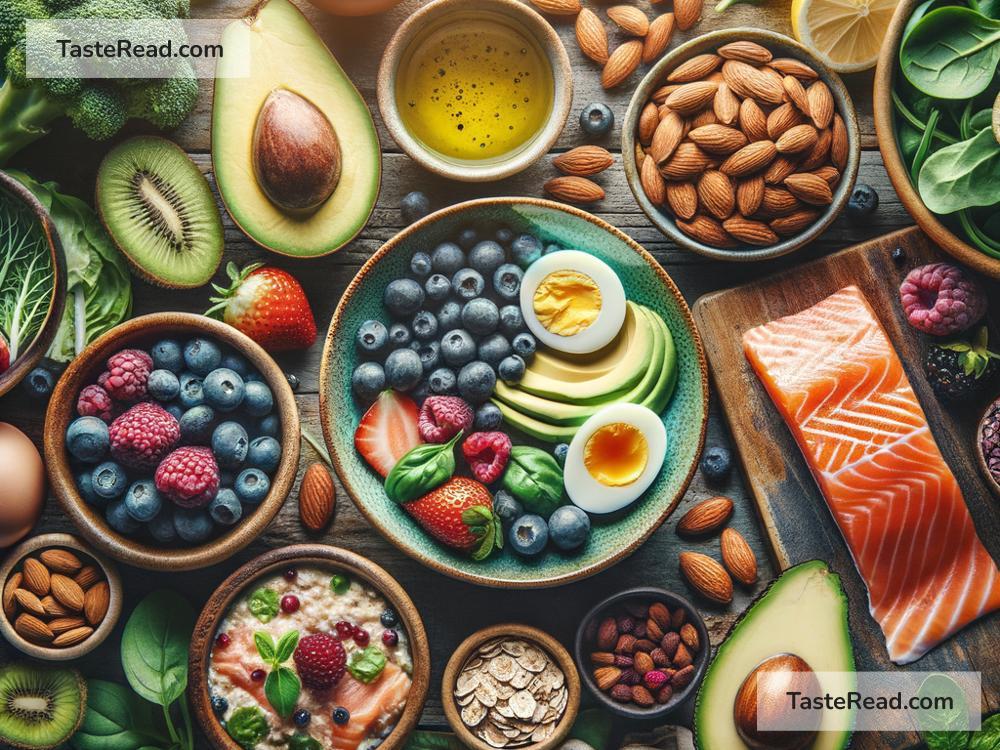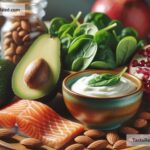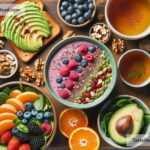Foods That Help You Feel Full and Satisfied
One of the biggest challenges when trying to eat healthier or maintain a balanced diet is dealing with hunger. We’ve all been there—eating meals or snacks that leave us feeling hungry shortly after. The key to managing hunger lies in choosing foods that keep you full for longer. These foods improve satiety, which simply means that they make you feel satisfied after eating. In this blog, we’ll talk about the best foods to improve satiety and how they can help you feel more in control of your eating habits.
1. Protein-Rich Foods
Protein is one of the most filling nutrients. It plays a key role in keeping you full because it takes longer for your body to digest compared to carbs. Protein also reduces hunger-related hormones while boosting hormones that signal fullness, like peptide YY and GLP-1.
Some great sources of protein include:
– Eggs: A great option for breakfast or snacks. Studies show that eggs can keep you full for hours, reducing the urge to snack.
– Chicken, fish, and tofu: These lean options are high in protein and great for healthy meals.
– Greek yogurt and cottage cheese: Both contain high amounts of protein and can easily be paired with fruits or nuts.
Including protein in each meal can help you feel fuller and more satisfied throughout the day.
2. Fiber-Packed Foods
Fiber is another important nutrient that helps with satiety. It slows down digestion, keeping food moving steadily through your digestive system. Foods high in fiber add bulk to your meals, which helps your stomach feel full. Plus, fiber is great for your gut health.
Top fiber-rich foods to add to your diet include:
– Whole grains: Brown rice, oatmeal, and quinoa are great sources.
– Fruits: Apples, oranges, and berries are rich in fiber and naturally sweet.
– Vegetables: Broccoli, carrots, spinach, and kale are loaded with fiber and low in calories.
– Legumes: Beans, chickpeas, and lentils are fiber-packed and protein-rich.
Eating more fiber is not only great for staying full but also helps regulate blood sugar levels.
3. Healthy Fats
Fats often get a bad reputation, but healthy fats are incredibly important for satiety. They digest slowly, help regulate your appetite, and also provide essential nutrients. Keep in mind that fats are calorie-dense, so you don’t need to eat large amounts to feel their benefits.
Some examples of healthy fats are:
– Avocado: Packed with heart-healthy fats and pairs well with salads, toast, or smoothies.
– Nuts and seeds: Almonds, walnuts, chia seeds, and flaxseeds are great sources of healthy fats and fiber.
– Olive oil: A good option for cooking or drizzling over salads.
– Fatty fish: Salmon, mackerel, and sardines are loaded with healthy omega-3 fats.
Adding controlled portions of healthy fats to your meals can help keep hunger at bay and support your overall health.
4. Foods with Water Content
Sometimes we confuse thirst with hunger. Including foods that have high water content can help keep you hydrated and feeling full. Water-rich foods take up space in your stomach and contain fewer calories, making them ideal for managing hunger.
Some examples of hydrating foods are:
– Cucumbers: These are super low in calories and mostly made of water.
– Watermelon: Refreshing and satisfying, it’s perfect for a snack or dessert.
– Soups: Broth-based soups with vegetables can be filling and comforting.
– Celery: A crunchy snack with almost no calories.
Including water-rich foods is a great way to stay hydrated while eating fewer calories.
5. Complex Carbohydrates
Not all carbs are bad! Complex carbohydrates contain fiber and digest slower than simple carbs like white bread or sugary snacks. Slow digestion means steady energy and long-lasting satiety.
Good sources of complex carbs include:
– Sweet potatoes: These are rich in fiber and satisfying.
– Whole-grain bread and pasta: A healthier alternative to refined carbs.
– Oats: Ideal for breakfast, they keep hunger at bay for hours.
– Legumes: Chickpeas, lentils, and black beans are double winners—they provide carbs and protein.
Choosing complex carbs over simple ones can help you avoid energy crashes and keep you satisfied.
6. High-Volume, Low-Calorie Foods
Another trick to boost satiety is to include foods that are high in volume but low in calories. These foods take up space in your stomach without adding a lot of calories, which helps you feel full. Vegetables are the best example.
Examples include:
– Leafy greens: Spinach, lettuce, and kale are great salad bases.
– Cauliflower: Low in calories and can be used to make rice or mashed potato substitutes.
– Zucchini: A versatile vegetable that can be spiralized into “zoodles.”
Eating larger portions of these foods can help satisfy hunger without overloading on calories.
Final Tips for Staying Full
To maximize the benefits of these filling foods, aim to create balanced meals that combine protein, fiber, healthy fats, and water-rich options. Also, eat mindfully—slow down while eating, pay attention to your body’s hunger and fullness cues, and avoid distractions like your phone or TV during meals.
When you focus on satiety-friendly foods, you’ll find that it’s easier to stay full, stick to your goals, and enjoy your meals. By making smarter food choices, managing hunger becomes much less of a challenge. Try incorporating some of these foods into your daily diet, and feel the difference!


